
Early sketch of my Shed Cafe Chair concept.
I think of the new line of furniture I designed for Shed as belonging to the same extended family. Consisting of just four unique pieces- a café chair, a barstool, a ‘community’ table and a multi-use, ‘demonstration’ table, the line evolved slowly over the past two years, or co-evolved, along with Cindy Daniel’s vision for Shed as a ‘modern grange’. Jensen Architects set the bar high by designing such an elegant building, whose pared down modernism manages to evoke agricultural vernacular without succumbing to nostalgia or rusticity.
I’m grateful that Cindy included me in early meetings with the architects as focus shifted to the building’s interior. Before actually designing anything, I had a hand in shaping a design direction, inspired by the region’s agricultural legacy and Healdsburg’s historic role as a major hub. My eyes turned to things like pallets, packing crates, fences and barns for inspiration, and I made a series of experiments and prototypes, leading eventually to a cogent formal language. The entire process was highly collaborative, a triangulation between the building itself and its built-in components, the functionality of the space, and the emerging ethos behind Shed’s product line and services.

My first breakthrough came with a concept for a massive table that would double as a method of curing wood I milled myself from locally-sourced ‘horticultural salvage’. A giant slab of unfinished sycamore would rest atop two stacks of neatly stickered wood, the weight of the slab ensuring the drying boards not warp. Each year, when the wood was adequately dry, it would be removed from under the table and made into something useful for Shed, either in the form of a limited production product for sale, or as an item for use in-house. The dry stack would be replaced with freshly milled boards and there would be a year to decide what to make with them. I love the idea of a table that also functions as a kind of ‘crowd source’ process piece that gives me an ongoing role as Shed develops over the years. To prototype the table, we milled a pecan tree and laid it up under the sycamore slab to dry over the past year. I’m now making pecan tabletops for the café, and the remainder is being made into small serving platters.

The first iteration of my Demonstration Table, set up to dry a load of pecan wood.
The next piece to emerge from my experimentation was the barstool, which I conceived as just a very high, simple chair, like a lifeguard stand. I didn’t want it to appear ‘designed’, but more like what might pop into your head if you heard the word ‘chair’, only taller, kind of high waist-ed. I also wanted it to evoke a character by its posture and the way it was put together, very straightforward and rigorous, screws exposed, made to last but repairable, practical like a farmer. Farmer Modern. I made the prototype with cedar I had on hand but knew the stool needed to be made of white ash for Shed. Ash is very pale, with a pleasingly straight grain, excellent strength to weight ratio, and is used extensively to make tool handles, baseball bats, lobster traps and boat parts like thwarts and tillers. I’ve always thought of white ash as a quintessentially American wood, and it grows throughout the deciduous forests of the US and Canada, so is available FSC-certified at a reasonable cost.


Prototypes for the Shed Barstool and Cafe Chair, to be slightly modified in production.
The Café Chair developed next from a structural experiment. I had an overstock of vertical grain Douglas Fir lathe I had been making into stickers for drying wood, dimensioned rough at about 1†x 2â€. The lathe is milled nearby in Cazadero, sold as offcuts from making dimensioned lumber, so it’s very inexpensive despite its straight, clear grain. I thought it would be a great challenge to make a comfortable dining chair using only lathe and a single fastening system; it would also be in keeping with the Modernist Farmer character I had invented. The experiment mostly worked, producing a reasonably strong, somewhat comfortable chair, but it needed tweaking. I abandoned the narrow parameters of using just 1 x 2 lathe, but kept the basic form, dimensioning structural parts for greater load bearing, and seat and backrest parts for greater flexibility and comfort. I made the next prototype in ash to complement the barstool. The new chair retains its airy permeability and still evokes the homemade-modernist paradigm, but also meets the requirements of comfort and durability. With its slat construction, exposed screws and whitewash finish, the chair shares elements with the barstool while exerting its own personality. The two are obviously related, but don’t match at the expense of their individuality.

I assembled the Shed Community table outside my studio for a trial fit.
By now I knew where the furnishings would be in the space, how they would interrelate and what would surround them. I just needed to design a very long Community Table for the center of the dining area, and it needed to anchor the collection and choreograph movement through the space. Because the 15’ 6†long table would be shared by people who did not necessarily know one another, I wanted to imply that it could be infinitely long, a table for everyone to gather round. I also wanted the table itself to be extremely minimal in order to draw attention to the food and the collection of people and how they naturally compose themselves. Knowing that Cindy was keen on using backless stools for seating, I also wanted the table to appear to be floating, to be as unobtrusive as possible, a meeting place more than an imposing thing. I pictured two identical boards running parallel to each other, separated by a narrow gap, allowing air to circulate through the middle of the table, unobstructed. I decided to make the boards of glued laminations of white ash, cut from full-length stock so there would be no seams. The boards are mounted on a base of three X-trestles made of 3†square tube, welded together and hot-dip galvanized, like farm equipment or fencing. At 33†wide the table invites intimacy while allowing more room for circulation around the space. I’m very proud of the Community Table and am excited that Cindy will be offering shorter versions for sale through Shed on a commission basis.
Working with Cindy and designing these furnishings for Shed over the past few years have been among the most challenging and rewarding endeavors of my career. We share a deep philosophical alignment and I’m truly honored to have been part of bringing Shed into being. I’m confident Shed will become a vital mainstay of the community and a major destination in the Russian River Valley.
To read more about the development of Furnishings for Shed, please click here and scroll down.








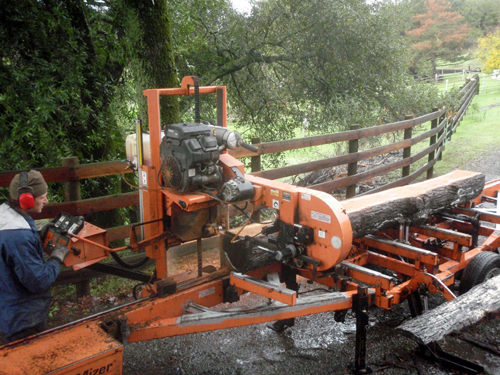
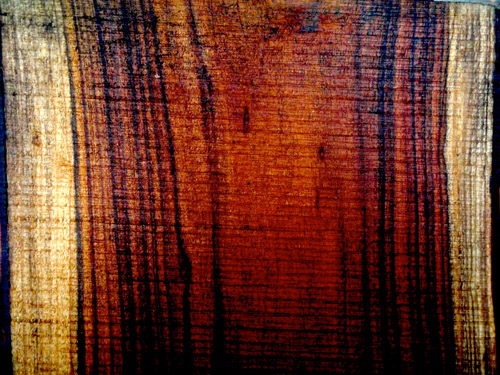




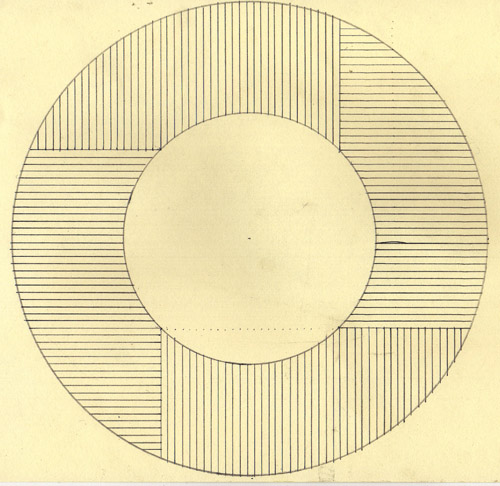 I designed a new paving pattern for the 17′ d path surrounding the sculpture
I designed a new paving pattern for the 17′ d path surrounding the sculpture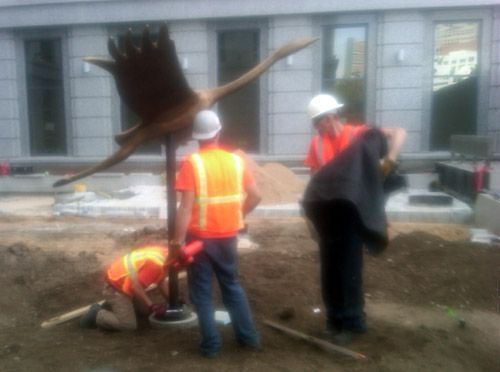 Demiurge Design installing the bronze crane in September (photo by Demiurge)
Demiurge Design installing the bronze crane in September (photo by Demiurge)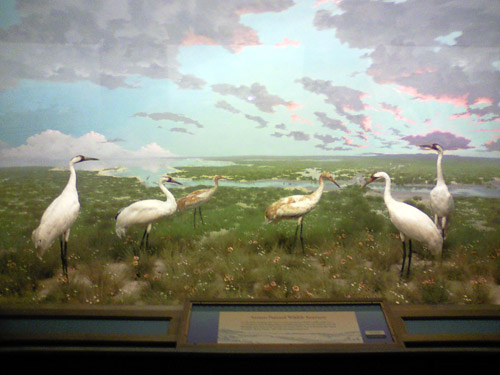 One of the domed dioramas features the Whooping Crane at Denver’s Museum of Nature and Science
One of the domed dioramas features the Whooping Crane at Denver’s Museum of Nature and Science
